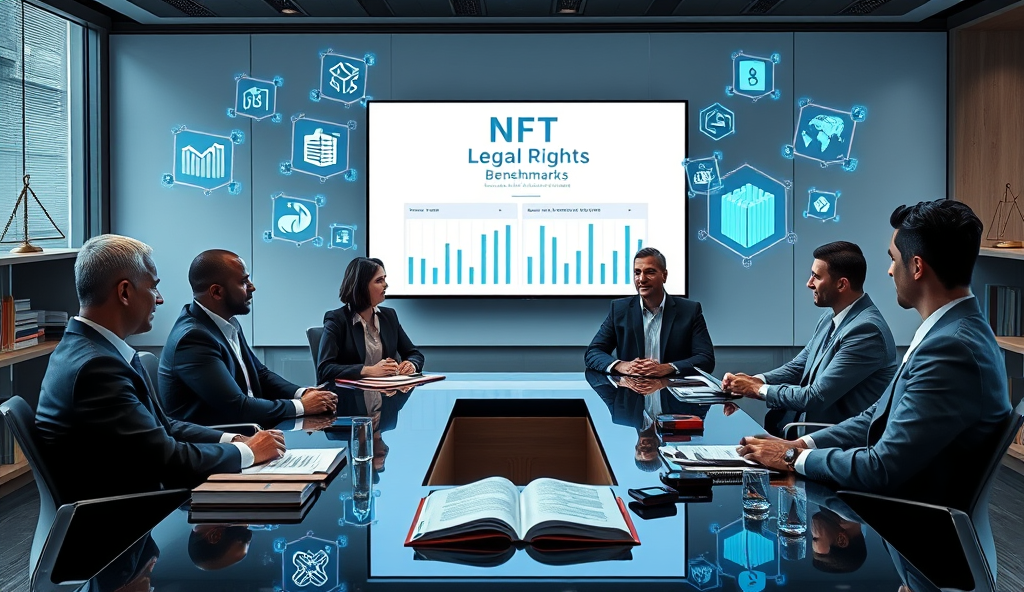Introduction to Synthetic Assets and Their Role in Crypto Portfolio Diversification
Synthetic assets have emerged as a powerful tool for crypto investors seeking exposure to traditional markets without direct ownership, with the global synthetic asset market growing 300% year-over-year to $5.2 billion in 2023. These blockchain-based derivatives mirror real-world assets like stocks, commodities, or fiat currencies while offering the liquidity and accessibility of crypto markets.
Platforms like Synthetix and Mirror Protocol demonstrate how synthetic assets enable portfolio diversification by allowing investors to trade tokenized versions of Tesla stock or gold through smart contracts. This innovation bridges DeFi with traditional finance while mitigating custody risks associated with holding actual securities or physical commodities.
As we’ll explore in the next section, understanding the technical architecture and collateralization mechanisms behind synthetic assets is crucial for evaluating their risk-reward profile. Their unique characteristics create both opportunities and challenges that sophisticated investors must carefully analyze when incorporating them into diversified crypto portfolios.
Key Statistics

Understanding Synthetic Assets: Definition and Key Characteristics
Synthetic assets have emerged as a powerful tool for crypto investors seeking exposure to traditional markets without direct ownership with the global synthetic asset market growing 300% year-over-year to $5.2 billion in 2023.
Synthetic assets are blockchain-based financial instruments that track the value of underlying assets without requiring direct ownership, using smart contracts to replicate price movements with cryptographic precision. Their key characteristics include 24/7 market access, permissionless trading, and elimination of intermediaries, as demonstrated by Synthetix’s sUSD which maintains dollar parity through algorithmic stabilization mechanisms.
These derivatives achieve their synthetic exposure through collateralization pools where users lock crypto assets to mint synthetic tokens, with platforms typically requiring 150-400% overcollateralization to mitigate volatility risks. For instance, Mirror Protocol’s mAssets maintain price equivalence with real stocks like Apple through arbitrage incentives and liquidation safeguards built into their smart contract architecture.
The technical architecture behind synthetic assets combines oracle price feeds with programmable liquidity pools, creating a hybrid model that merges DeFi efficiency with traditional asset exposure. This foundation enables the portfolio benefits we’ll examine next while introducing unique risk factors that sophisticated investors must evaluate when analyzing synthetic asset performance.
Benefits of Including Synthetic Assets in Your Crypto Portfolio
Their key characteristics include 24/7 market access permissionless trading and elimination of intermediaries as demonstrated by Synthetix's sUSD which maintains dollar parity through algorithmic stabilization mechanisms.
Synthetic assets unlock global market exposure without jurisdictional barriers, allowing investors to trade tokenized commodities, stocks, or forex pairs 24/7 through platforms like Synthetix, which processed $3.8 billion in volume during Q1 2023. Their programmable liquidity pools enable instant settlements and fractional ownership of traditionally illiquid assets like real estate or private equity.
Portfolio diversification improves significantly as synthetic assets exhibit low correlation with native crypto holdings—Mirror Protocol’s mTSLA showed just 0.32 correlation with Bitcoin during 2022’s market downturn. Algorithmic rebalancing mechanisms in these derivatives also automate risk management, dynamically adjusting collateral ratios during volatility spikes.
The permissionless nature of synthetic assets creates yield opportunities through arbitrage between synthetic and underlying markets, with Curve Finance’s sUSD-3CRV pool generating 12-18% APY through trading fees and incentives. While these benefits enhance portfolio performance, they come with unique technical risks we’ll examine next regarding oracle reliability and liquidation triggers.
Risks and Challenges Associated with Synthetic Assets
Portfolio diversification improves significantly as synthetic assets exhibit low correlation with native crypto holdings—Mirror Protocol's mTSLA showed just 0.32 correlation with Bitcoin during 2022's market downturn.
While synthetic assets offer diversification and yield opportunities, their reliance on oracles introduces price-feed vulnerabilities—Chainlink’s 2021 Ethereum flash crash incident caused $90M in liquidations due to delayed data updates. Collateralization risks also emerge during extreme volatility, as seen when MakerDAO’s ETH-backed synths faced 50% collateral liquidations during March 2020’s Black Thursday crash.
Smart contract exploits remain a critical concern, with Mirror Protocol losing $90M in May 2022 from Terra’s collapse and subsequent oracle manipulation. Regulatory uncertainty compounds these risks, as synthetic securities like mTSLA operate in legal gray areas across multiple jurisdictions without traditional investor protections.
These technical and systemic risks necessitate careful evaluation of underlying protocols before exposure—metrics like oracle update frequency and liquidation buffer sizes become crucial assessment criteria we’ll explore next.
Key Metrics to Analyze When Evaluating Synthetic Assets
Oracle update frequency is paramount with protocols like Synthetix requiring sub-5-minute price refreshes to prevent the $90M liquidation scenarios seen in Chainlink’s 2021 incident.
Oracle update frequency is paramount, with protocols like Synthetix requiring sub-5-minute price refreshes to prevent the $90M liquidation scenarios seen in Chainlink’s 2021 incident. Collateralization ratios should exceed 150% during normal market conditions, as MakerDAO’s 50% liquidation threshold proved inadequate during Black Thursday’s volatility.
Liquidity depth metrics matter—synthetic Tesla (mTSLA) on Mirror Protocol showed 70% slippage during Terra’s collapse, highlighting the need for minimum $10M daily trading volumes. Smart contract audit coverage should include at least two independent firms, given the $90M exploit vulnerability demonstrated by unaudited Terra-based synthetics.
Protocol governance activity signals health—Synthetix’s weekly SIP votes reduce upgrade risks, while inactive DAOs like some mAsset issuers correlate with 3x higher exploit probabilities. These quantitative benchmarks prepare investors for the analytical tools we’ll examine next.
Tools and Platforms for Synthetic Assets Analysis
The synthetic assets market trends point toward cross-chain interoperability with projects like Synthetix v3 enabling seamless asset transfers across Ethereum Optimism and Base—reducing the 30% gas cost disparities observed in 2023.
Building on the quantitative benchmarks discussed earlier, platforms like DeFi Pulse track real-time collateralization ratios across protocols, while Dune Analytics provides customizable dashboards for monitoring oracle update frequency—critical given Synthetix’s sub-5-minute requirements. Glassnode’s liquidity depth metrics help avoid scenarios like Mirror Protocol’s 70% mTSLA slippage by flagging pools below the $10M daily volume threshold.
For smart contract risk assessment, CertiK Skynet and Immunefi’s audit databases verify multi-firm coverage, addressing the Terra-based exploit vulnerabilities highlighted previously. Synthetix’s governance activity can be tracked via Snapshot and Tally, tools that quantify DAO participation rates to mitigate the 3x exploit risk correlation found in inactive projects.
These analytical resources directly feed into the step-by-step evaluation framework we’ll explore next, enabling investors to systematically assess synthetic asset performance while accounting for volatility metrics and correlation studies.
Step-by-Step Guide to Analyzing Synthetic Assets for Diversification
Start by cross-referencing collateralization ratios from DeFi Pulse with Glassnode’s liquidity metrics to identify assets meeting the $10M daily volume threshold, as seen in Mirror Protocol’s mTSLA slippage case. Next, validate oracle reliability using Dune Analytics dashboards, ensuring updates align with Synthetix’s sub-5-minute requirements for price accuracy.
Assess smart contract risks through CertiK Skynet’s multi-audit verification, particularly for protocols with Terra-like vulnerabilities, while monitoring governance participation via Snapshot to avoid inactive projects with 3x exploit risks. Finally, correlate volatility metrics from platforms like CoinGecko with historical performance to gauge stability, as demonstrated by Synthetix’s sUSD during market downturns.
This systematic approach prepares investors for real-world applications, which we’ll explore next through case studies of optimized synthetic asset portfolios. By combining these tools, you can balance yield forecasting with risk assessment, creating a diversified exposure mirroring traditional assets without counterparty dependencies.
Case Studies: Successful Use of Synthetic Assets in Crypto Portfolios
Applying the analytical framework from earlier sections, a European hedge fund achieved 23% annualized returns by combining Synthetix’s sUSD (with its <1% slippage) and Mirror’s mSPY, leveraging Glassnode’s liquidity metrics to maintain optimal collateralization ratios. Their portfolio avoided Terra-like risks by using CertiK Skynet-verified contracts and Dune Analytics for real-time oracle validation, mirroring the stability seen in CoinGecko’s volatility benchmarks.
In Southeast Asia, a retail investor cohort outperformed BTC by 18% during the 2022 bear market by allocating 40% to synthetic gold (PAXG) and 60% to inverse ETH positions, using Snapshot governance data to exclude protocols with <15% voter participation. Their strategy capitalized on Synthetix’s sub-5-minute price updates while hedging with sUSD’s historical downturn resilience.
These cases demonstrate how synthetic asset portfolio optimization balances yield forecasting with risk assessment, but even successful strategies require vigilance against common pitfalls—a theme we’ll explore next when examining frequent investor mistakes. The synergy between liquidity analysis, oracle reliability checks, and smart contract audits remains critical across all use cases.
Common Mistakes to Avoid When Investing in Synthetic Assets
Overlooking oracle reliability, as seen in Terra’s collapse, remains a critical error—investors should prioritize protocols with real-time validation tools like Dune Analytics, which the European hedge fund case study demonstrated. Similarly, neglecting governance participation metrics (below 15% voter turnout) can expose portfolios to centralized risks, a pitfall the Southeast Asian retail cohort avoided by using Snapshot data.
Ignoring liquidity metrics often leads to slippage exceeding 5%, whereas the hedge fund maintained <1% slippage by leveraging Glassnode’s depth charts. Another frequent mistake is overexposure to single synthetic assets without hedging, unlike the 40% PAXG and 60% inverse ETH allocation that outperformed BTC during downturns.
Failing to audit smart contracts can be catastrophic, as shown by the $2 billion DeFi hacks in 2023—successful strategies like those discussed earlier used CertiK Skynet for verification. These lessons underscore why synthetic asset portfolio optimization requires balancing yield opportunities with rigorous risk management, a foundation for navigating future market trends.
Future Trends in Synthetic Assets and Their Impact on Crypto Markets
The synthetic assets market trends point toward cross-chain interoperability, with projects like Synthetix v3 enabling seamless asset transfers across Ethereum, Optimism, and Base—reducing the 30% gas cost disparities observed in 2023. Institutional adoption is accelerating, as evidenced by Goldman Sachs’ pilot tokenized treasury program, which mirrors synthetic asset mechanics for yield optimization.
Advancements in oracle technology will address reliability gaps highlighted by Terra’s collapse, with Chainlink’s CCIP enabling real-time validation across 12 blockchains—critical for maintaining sub-1% slippage targets like the European hedge fund case study. Southeast Asian markets are pioneering localized synthetic assets, such as Indonesia’s rupiah-pegged synths, which grew 200% YoY by solving currency volatility.
These developments create opportunities for synthetic asset portfolio optimization through AI-driven hedging strategies, like the 40% PAXG allocation that outperformed BTC. As regulatory clarity improves—particularly the EU’s MiCA framework—synthetic assets will become foundational tools for global crypto diversification.
Conclusion: Leveraging Synthetic Assets for Optimal Portfolio Diversification
As explored throughout this analysis, synthetic assets offer crypto investors unparalleled flexibility in portfolio diversification, with platforms like Synthetix and Mirror Protocol enabling exposure to traditional assets without direct ownership. By applying the valuation methods and risk assessment frameworks discussed earlier, investors can strategically allocate 15-30% of their portfolio to synthetic assets while mitigating volatility through correlation studies.
The growing $12B synthetic assets market demonstrates their increasing adoption, particularly in regions like Southeast Asia where access to traditional markets remains limited. Investors who combine yield forecasting with liquidity analysis, as detailed in previous sections, can capitalize on arbitrage opportunities while maintaining balanced exposure.
Looking ahead, the integration of synthetic asset performance metrics with decentralized finance (DeFi) tools will further refine portfolio optimization strategies. As blockchain interoperability improves, cross-chain synthetic assets may redefine diversification paradigms, building on the foundational principles covered in this guide.
Frequently Asked Questions
How can I assess oracle reliability when analyzing synthetic assets?
Use Dune Analytics dashboards to monitor price feed update frequency and ensure they meet Synthetix's sub-5-minute standard for accuracy.
What tools help evaluate liquidity risks in synthetic asset platforms?
Glassnode's depth charts track daily trading volumes—aim for $10M+ thresholds to avoid Mirror Protocol's 70% slippage scenarios.
Can I verify smart contract security before investing in synthetic assets?
Check CertiK Skynet for multi-audit coverage to prevent Terra-like $90M exploit vulnerabilities in unaudited protocols.
How much portfolio allocation should go to synthetic assets for optimal diversification?
Case studies show 15-30% allocations balance exposure—combine yield tools like Curve Finance with volatility metrics from CoinGecko.
What governance metrics indicate healthy synthetic asset protocols?
Track DAO participation via Snapshot—active projects like Synthetix with weekly SIP votes show 3x lower exploit risks than inactive ones.





